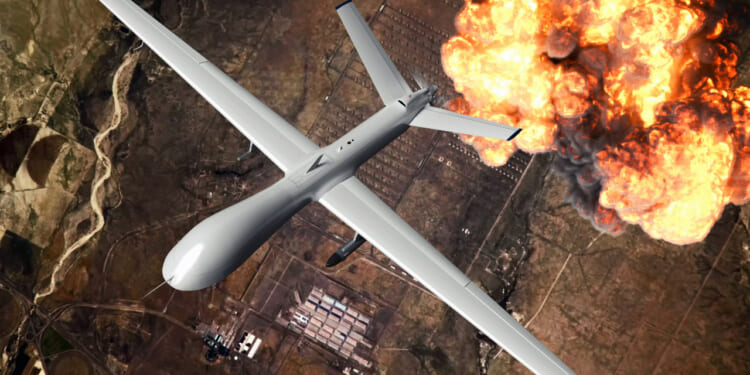Ukrainian attacks on Russian oil have moved from being mere pinpricks to having an appreciable impact on global markets.
In the wake of June’s brief military conflict involving Israel, Iran, and the United States, the world oil market has generally tuned out geopolitical risk. In hindsight there was, briefly, a risk premium in crude oil, but it quickly disappeared when Iran did not lash out at anything related to oil production or transportation.
Now, however, the long conflict between Ukraine and Russia is beginning to have at least a modest market impact. The surge in prices that followed the introduction of sweeping sanctions against Russia in 2022 — when market participants were not sure whether and how much Russian exports would fall — ebbed away once it became clear that most of that volume could still find buyers. But in the last two months, Ukrainian attacks on Russian oil facilities have begun to reach a number and frequency that have reached the threshold of impacting market-relevant volumes of Russian oil, undermining the previous conventional wisdom that held Ukrainian attacks would not be enough to move the needle. Instead, the attacks would mainly impact domestic refining rather than exports.
What has changed in recent months is both the frequency of attacks and their targets. Whereas initial Ukrainian strikes via attack drones (and in the early days of the war, occasionally helicopters) hit refineries and petroleum product storage and distribution depots, the strikes have begun to target export terminals in recent months. In August, three strikes hit ancillary infrastructure at loading terminals, pipelines, and pumping stations, disrupting crude flows. That kind of damage can be fixed in a few days, but it adds up over time, as we saw in the 2000s with the repeated insurgent attacks on the Kirkuk-Ceyhan pipeline carrying exports from northern Iraq to the Mediterranean.
Ukraine’s efforts went up a notch with the September 12 drone attack against the Baltic Sea export terminal at Primorsk, which targeted both pumping stations and the tanker loading facility itself, taking the facility out of operation and hobbling its ability to shift volumes to Ust-Luga, Russia’s other main Baltic Sea export terminal.
Primorsk handles 1.25 million bpd of crude and product exports. President Zelensky claimed the Primorsk strike as a victory, stating that “the most effective sanctions — the ones that work the fastest — are strikes.” Primorsk was back in partial operation within a few days afterward, but the increasing number of strikes is gradually grinding down Russia’s volume of exports. With repeated attacks against the two main Baltic terminals, it would be difficult to reroute those volumes anywhere else, and the volume impacts add up over time. Russia’s refining capacity has effectively been curtailed by over 10 percent, with refining runs at around five million bpd for Russia as a whole, reducing the availability of refined products for export.
Russia also lacks the volume of storage capacity that exists in other producers in its volumetric league, like Saudi Arabia and the United States. That means that if refining and export terminal disruptions have an impact over time, despite repairs, Russia may have to shut in some crude oil production and fall below its OPEC+ quota. It also could help widen the current spread between gasoline and diesel, which has been in shorter supply worldwide in an otherwise well-supplied market, pushing up the pricing differential.
While this is a problem for Russia, it will be quietly welcomed in some quarters. Other participants in OPEC+, like Saudi Arabia and the United Arab Emirates (UAE), are looking to bring further curtailed volumes back online. This comes at a time when Saudi Arabia has accepted that it cannot hold prices at its preferred level via production restraints and therefore has shifted back toward a policy of restoring its market share.
If continued Ukrainian attacks on Russian export volumes have even a modest cumulative impact, this will help avoid what would otherwise be a tense negotiation between the top-tier OPEC+ countries over how much quotas will go up. If Russia is de facto constrained, it may pocket quota increases heading into next year that it will be unable to fulfill. That would be very convenient for the handful of countries that have substantial spare production capacity — mainly Saudi Arabia and the UAE.
About the Author: Greg Priddy
Greg Priddy is a Senior Fellow for the Middle East at the Center for the National Interest. He also consults for corporate and financial clients on political risk in the region and global energy markets. From 2006 to 2018, Mr. Priddy was Director, Global Oil, at Eurasia Group. His work there focused on forward-looking analysis of how political risk, sanctions, and public policy variables impact energy markets and the global industry, with a heavy emphasis on the Persian Gulf region. Prior to that, from 1999 to 2006, Mr. Priddy worked as a contractor for the US Energy Information Administration (EIA) at the U.S. Department of Energy. Mr. Priddy’s writing has been published in The New York Times, The National Interest, Barron’s, and the Nikkei Asian Review, among others.
Image: Shutterstock/andrey_


















